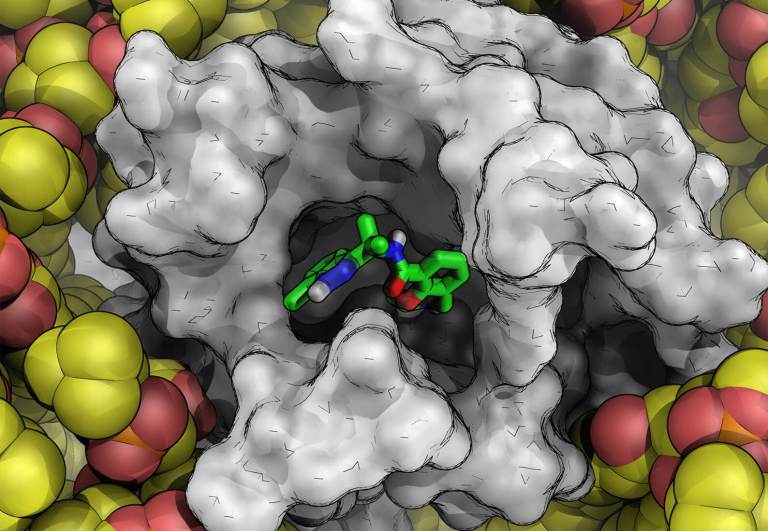- Publication
- Sep 8, 2015
Prediction of Long Loops with Embedded Secondary Structure Using the Protein Local Optimization Program
Miller, et al. J. Chem. Theory Comput., 2013, 9(3), 1846-1864- Publication
- Sep 8, 2015
Cytochrome P450CAM Enzymatic Catalysis Cycle: A Quantum Mechanics/Molecular Mechanics Study
Guallar, et al. J. Am. Chem. Soc., 2004, 126, 8501-8508- Publication
- Sep 8, 2015
A Structure-Based Virtual Screening Approach for Discovery of Covalently Bound Ligands
Toledo Warshaviak, et al. J. Chem. Inf. Model, 2014, 54(7), 1941-1950- Publication
- Sep 8, 2015
Structure of the Arabidopsis thaliana TOP2 oligopeptidase
Wang, et al. Acta. Crystallogr. F Struct. Biol. Commun., 2014, 70(Pt 5), 555-559- Publication
- Sep 8, 2015
Theoretical Study of Cisplatin Binding to Purine Bases: Why Does Cisplatin Prefer Guanine over Adenine as Substrate?
Baik, et al. J. Am. Chem. Soc., 2003, 125, 14082-14092- Publication
- Sep 8, 2015
A Structure-Based Model for Predicting Serum Albumin Binding
Lexa, et al. PLoS ONE, 2014, 9(4), e93323- Publication
- Sep 8, 2015
Mechanistic Studies on the Hydroxylation of Methane by Methane Monooxygenase
Baik, et al. Chemical Reviews, 2003, 103, 2385-2419- Publication
- Sep 8, 2015
Peripheral Heme Substituents Control the Hydrogen-Atom Abstraction Chemistry in Cytochromes P450
Guallar, et al. Proc. Nat. Acad. Sci. USA, 2003, 100, 6998-7002- Publication
- Sep 8, 2015
A Computational Approach to Enzyme Design: Predicting ‘-Aminotransferase Catalytic Activity Using Docking and MM-GBSA Scoring
Sirin, et al. J. Chem. Inf. Model., 2014, 54(8), 2334-2346- Publication
- Sep 8, 2015
How Iron-containing Proteins Control Dioxygen Chemistry: A Detailed Atomic Level Description via Accurate Quantum Chemical and Mixed Quantum Mechanics/Molecular Mechanics Calculations
Friesner, et al. Coordination Chemistry Reviews, 2003, 238-239, 267-290- Publication
- Sep 8, 2015
Physics-Based Enzyme Design: Predicting Binding Affinity and Catalytic Activity
Sirin, et al. Proteins, 2014, 82(12), 3397-409- Publication
- Sep 8, 2015
Reversible Dioxygen Binding to Hemerythrin
Wirstam, et al. J. Am. Chem. Soc., 2003, 125, 3980-3987
Latest insights from Extrapolations blog
Training & Resources
Online certification courses
Level up your skill set with hands-on, online molecular modeling courses. These self-paced courses cover a range of scientific topics and include access to Schrödinger software and support.
Free learning resources
Learn how to deploy the technology and best practices of Schrödinger software for your project success. Find training resources, tutorials, quick start guides, videos, and more.
Other Resources


